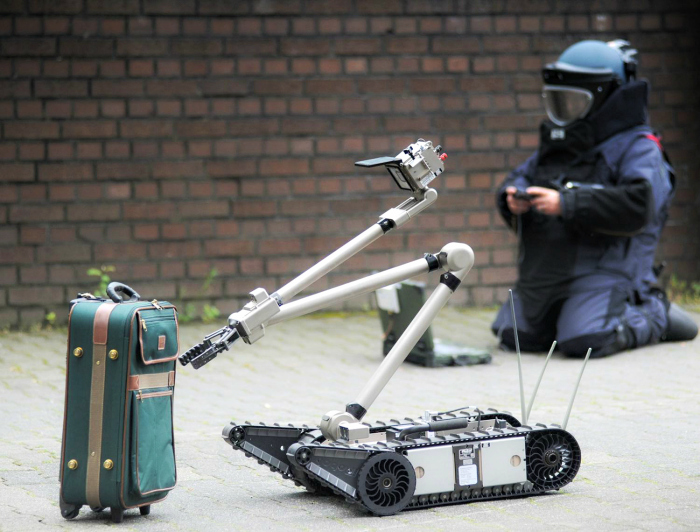by Kerby Anderson
Two weeks ago, the Dallas police used their bomb-disposal robot to end the standoff with the cop killer. Does this unprecedented use of a police robot signal a change in the way technology will be used to fight crime in the future? I think that is does.
Police departments have been willing to embrace any technological advance that keeps officers safe and helps them more efficiently fight crime. GPS, cameras, and laptops can be found in most every squad car. Now that the cost of military-grade robots is dropping, it is likely that many police cars in the future might also have a robot.
The argument for doing this is straightforward. Military-grade robots now used by bomb squads are used to keep police and citizens away from danger (either a suspected bomb or a dangerous suspect). Attaching a bomb to a robot was probably the next logical step.
On the other hand, there is the concern that I have written about in the past about the militarization of the police. Many of these robots are similar to or even identical to the ones used by the military. Of course, they are very expensive and so it is unlikely that they will be used too often to blow up suspects.
It is possible that the use of these robots can save lives. A robot operator can stay a safe distance from a suspect and tell him to drop a weapon. If he fails to comply, a robot could be used to bring non-lethal force like a Taser. In many scenarios, it would be hard for an officer to use a Taser, especially if the suspect already has a weapon drawn.
Fortunately, the police robot ended the confrontation in Dallas without any other officers being killed. Its success guarantees that other police departments will consider using police robots for other such confrontations. That is why we now need a debate and discussion about the use of police robots.
 Listen Online
Listen Online Watch Online
Watch Online Find a Station in Your Area
Find a Station in Your Area












 Listen Now
Listen Now Watch Online
Watch Online
